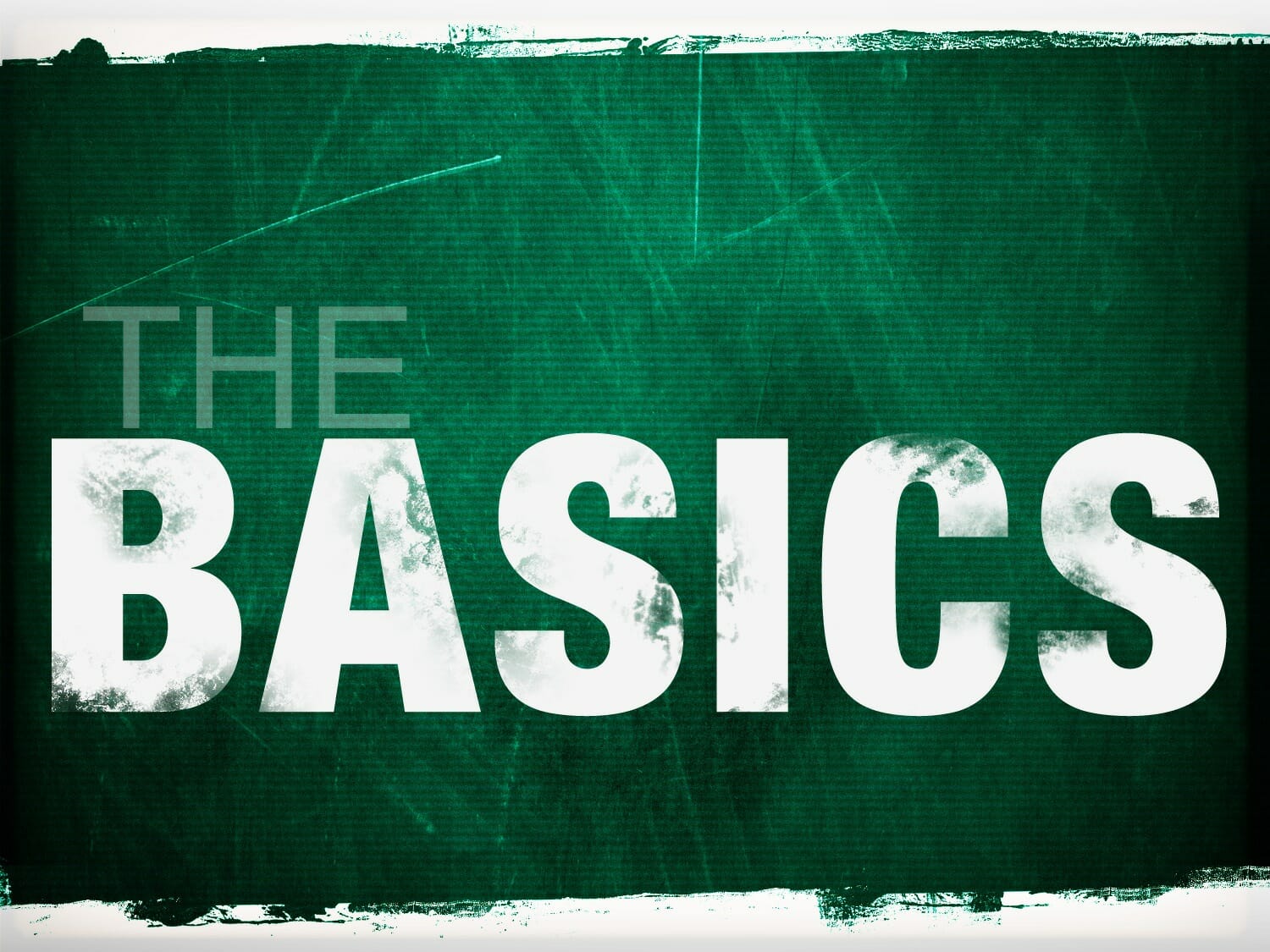Life Insurance Basics

Life insurance is an essential financial tool that provides security and peace of mind to individuals and their loved ones. It serves as a safety net, offering financial protection in the event of an untimely demise. In today's complex financial landscape, understanding the fundamentals of life insurance is crucial for making informed decisions and ensuring adequate coverage. This comprehensive guide aims to demystify life insurance, exploring its key components, types, and the benefits it offers.
The Foundation of Life Insurance

At its core, life insurance is a contract between an individual (the policyholder) and an insurance company. The policyholder pays regular premiums to the insurer, who, in return, promises to pay a specified sum of money (the death benefit) to the designated beneficiaries upon the policyholder’s death. This financial safeguard ensures that the policyholder’s loved ones are provided for and their financial goals and obligations are met, even in their absence.
The primary purpose of life insurance is to offer financial stability and support to those left behind. It can help cover various expenses, including funeral costs, outstanding debts, daily living expenses, education funds for children, and even provide an inheritance. Life insurance is particularly valuable for individuals with financial dependents, such as spouses, children, or aging parents, as it ensures their well-being and financial security.
Types of Life Insurance Policies

Life insurance policies can be broadly categorized into two main types: term life insurance and permanent life insurance. Each type has unique features and serves different purposes, catering to the diverse needs of policyholders.
Term Life Insurance
Term life insurance is a straightforward and affordable option that provides coverage for a specified period, known as the “term.” These policies are designed to offer protection during specific life stages, such as raising a family or paying off a mortgage. The policyholder selects the term length, typically ranging from 10 to 30 years, and pays a fixed premium throughout. If the policyholder passes away during the term, the beneficiaries receive the death benefit. However, if the policy expires without a claim, the coverage ends, and the policyholder receives no payout.
Term life insurance is ideal for individuals seeking temporary coverage to protect their loved ones during a specific period. It is particularly beneficial for those with time-bound financial obligations, as it provides a cost-effective way to ensure their financial commitments are met. For example, a young couple with dependent children may opt for term life insurance to cover their mortgage and living expenses until their children become independent.
Permanent Life Insurance
Permanent life insurance, as the name suggests, offers lifelong coverage, ensuring that the policyholder’s beneficiaries receive the death benefit whenever the policyholder passes away. This type of insurance provides a comprehensive financial safety net, as it remains in force as long as the policyholder pays the premiums. Permanent life insurance policies typically have higher premiums compared to term life insurance, as they offer a guaranteed death benefit and often accumulate cash value over time.
There are several subtypes of permanent life insurance, including whole life insurance, universal life insurance, and variable life insurance. Whole life insurance provides a fixed death benefit and guaranteed cash value accumulation. Universal life insurance offers flexibility in premium payments and death benefit amounts, allowing policyholders to adjust their coverage as their needs change. Variable life insurance allows policyholders to invest a portion of their premiums in different investment options, providing the potential for higher returns but also carrying more risk.
Permanent life insurance is ideal for individuals seeking long-term financial protection and those with a need for substantial death benefits. It is often chosen by individuals with ongoing financial responsibilities, such as business owners or those with significant assets they wish to pass on to their heirs. The cash value accumulation feature of permanent life insurance can also serve as a savings component, providing a tax-advantaged way to build wealth over time.
Key Components of a Life Insurance Policy
Understanding the essential elements of a life insurance policy is crucial for making informed choices. Here are some key components to consider:
- Premiums: Premiums are the regular payments made by the policyholder to maintain the life insurance policy. The amount of the premium is determined by various factors, including the policyholder's age, health, lifestyle, and the type and amount of coverage chosen.
- Death Benefit: The death benefit is the sum of money paid out to the policyholder's beneficiaries upon their death. It is the primary purpose of life insurance and can be customized to meet specific financial needs.
- Policy Duration: The duration of a life insurance policy can vary depending on the type chosen. Term life insurance policies have a set term, while permanent life insurance offers lifelong coverage.
- Beneficiaries: Beneficiaries are the individuals or entities designated by the policyholder to receive the death benefit. It is crucial to carefully select and regularly update beneficiaries to ensure the policy's intentions are fulfilled.
- Rider Options: Riders are additional benefits or features that can be added to a life insurance policy. Common riders include waiver of premium, which waives premium payments if the policyholder becomes disabled, and accelerated death benefit, which allows access to a portion of the death benefit while the policyholder is alive to cover long-term care expenses.
Factors Influencing Life Insurance Premiums
Life insurance premiums can vary significantly depending on several factors. Understanding these factors can help policyholders make informed decisions and potentially negotiate more favorable rates.
- Age: Age is a critical factor in determining life insurance premiums. In general, younger individuals pay lower premiums as they are considered less risky. As individuals age, their health may decline, and premiums tend to increase.
- Health Status: The health of the policyholder plays a significant role in premium calculation. Individuals with pre-existing medical conditions or unhealthy lifestyles may face higher premiums or even be declined coverage.
- Lifestyle and Hobbies: Certain hobbies and lifestyles can impact premium rates. Activities such as extreme sports, smoking, or frequent travel may be considered risky, leading to higher premiums.
- Occupation: The nature of an individual's occupation can also affect premiums. High-risk occupations, such as those involving heavy machinery or hazardous materials, may result in higher premiums.
- Amount of Coverage: The level of coverage chosen directly impacts premiums. Higher death benefit amounts typically require higher premiums.
It is essential to note that while these factors influence premiums, insurance companies use different methodologies to calculate rates. Additionally, the use of medical underwriting and the increasing popularity of simplified issue and guaranteed issue policies offer alternatives for individuals with health concerns or those seeking immediate coverage.
The Role of Life Insurance Agents and Brokers

Navigating the complex world of life insurance can be challenging, and that’s where life insurance agents and brokers come into play. These professionals serve as trusted advisors, guiding individuals through the process of selecting the right life insurance policy.
Life insurance agents typically represent a single insurance company, offering a range of policies from that specific provider. They undergo training and certification to understand the products they sell and can provide personalized advice based on the client's needs. Agents often build long-term relationships with their clients, offering ongoing support and policy management.
On the other hand, life insurance brokers work independently and represent multiple insurance companies. They have access to a wider range of products and can compare policies from different providers to find the best fit for their clients. Brokers provide impartial advice, ensuring that clients receive the most suitable coverage at competitive rates.
Whether working with an agent or a broker, it is essential to choose a reputable professional with extensive knowledge and experience in the industry. They can help individuals navigate the complex world of life insurance, ensuring that their financial protection needs are met.
The Impact of Life Insurance on Estate Planning
Life insurance plays a vital role in estate planning, offering a way to protect and preserve an individual’s legacy. It can provide significant benefits when incorporated into a comprehensive estate plan.
- Estate Taxes: Life insurance proceeds are typically not subject to estate taxes, making them an effective tool for minimizing tax liabilities. This can help preserve the value of an estate for heirs and beneficiaries.
- Liquidity for Heirs: Life insurance provides immediate cash to heirs, ensuring they have the financial resources to settle the estate and cover any outstanding debts or expenses. This liquidity can be crucial for maintaining the financial stability of the estate.
- Business Succession Planning: For business owners, life insurance can be a critical component of succession planning. It can provide funds to buy out a deceased owner's share of the business, ensuring its continuity and protecting the interests of remaining partners or shareholders.
- Charitable Giving: Life insurance can be used as a charitable tool, allowing individuals to leave a lasting legacy by naming a charitable organization as a beneficiary. This can provide tax benefits and support causes that are close to the policyholder's heart.
When incorporating life insurance into estate planning, it is crucial to work with a qualified estate planning attorney and a knowledgeable life insurance professional. They can help structure policies and ensure that the estate plan aligns with the policyholder's goals and intentions.
Future Trends and Innovations in Life Insurance
The life insurance industry is evolving, and several trends and innovations are shaping its future. Here are some key developments to watch:
- Digital Transformation: The rise of digital technology is transforming the life insurance industry. Insurtech companies are leveraging data analytics and artificial intelligence to streamline processes, enhance customer experiences, and offer more personalized policies.
- Simplified Underwriting: Traditional medical underwriting processes are being simplified, allowing for faster and more efficient policy issuance. This trend is particularly beneficial for individuals with health concerns, as it reduces the barriers to obtaining coverage.
- Pay-as-You-Live Policies: Some insurance companies are exploring innovative pricing models, such as pay-as-you-live policies. These policies offer flexible premiums based on an individual's health and lifestyle, providing a more tailored approach to coverage.
- Wellness Programs: Insurance companies are incentivizing healthy lifestyles by offering wellness programs that reward policyholders for maintaining good health. These programs can lead to lower premiums and better overall health outcomes.
- Parametric Insurance: Parametric insurance policies provide coverage based on specific triggers, such as natural disasters or economic indicators. These policies offer a more predictable and rapid payout process, making them an attractive option for certain risks.
As the life insurance industry continues to evolve, staying informed about these trends and innovations can help individuals make more strategic decisions about their financial protection. It is essential to work with reputable insurance professionals who stay abreast of these developments to ensure access to the best policies and services.
What is the average cost of life insurance?
+
The average cost of life insurance varies based on several factors, including age, health, lifestyle, and the amount of coverage. As a general guideline, a 30-year-old non-smoking male in good health can expect to pay around 25-35 per month for a $500,000 term life insurance policy. However, these rates can fluctuate significantly based on individual circumstances.
Is life insurance tax-deductible?
+
In most cases, life insurance premiums are not tax-deductible for individuals. However, there are certain situations where life insurance may offer tax benefits. For instance, if you own a business and purchase life insurance on the lives of key employees or partners, the premiums may be tax-deductible as a business expense. It’s essential to consult with a tax professional to understand the specific tax implications in your situation.
Can I change my life insurance policy after purchasing it?
+
Yes, you can often make changes to your life insurance policy after purchasing it. This may include adjusting the coverage amount, adding or removing beneficiaries, or converting a term policy to a permanent one. However, it’s important to review the terms of your policy and consult with your insurance provider to understand the specific rules and potential fees associated with making changes.



